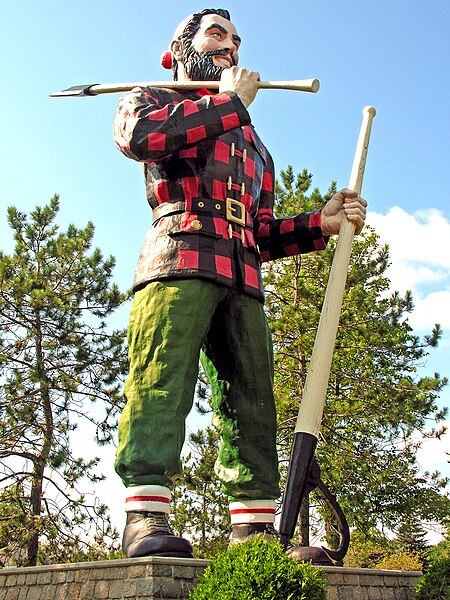Paul Bunyan is a giant lumberjack and folk hero in American and Canadian folklore. His tall tales revolve around his superhuman labors, and he is customarily accompanied by Babe the Blue Ox, his pet and working animal. The character originated in the oral tradition of North American loggers, and was later popularized by freelance writer William B. Laughead (1882–1958) in a 1916 promotional pamphlet for the Red River Lumber Company. He has been the subject of various literary compositions, musical pieces, commercial works, and theatrical productions. His likeness is displayed in a number of oversized statues across North America.
Paul Bunyan statue in Bangor, Maine
The first Paul Bunyan statue (Bemidji, Minnesota)
A still from the 1960 Mel-O-Toons cartoon Paul Bunyan. Typical among juvenile accounts, the cartoon features Paul Bunyan batting cannonballs in the American Revolutionary War, sinking pirate ships, and building the Big Rock Candy Mountain.
Fournier in 1865
In folklore, giants are beings of humanoid appearance, but are at times prodigious in size and strength or bear an otherwise notable appearance. The word giant is first attested in 1297 from Robert of Gloucester's chronicle. It is derived from the Gigantes of Greek mythology.
The giants Fafner and Fasolt seize Freyja in Arthur Rackham's illustration of Richard Wagner's Der Ring des Nibelungen.
Giants Mata and Grifone celebrated in Messina in August, Sicily, Italy
David faces Goliath in this 1888 lithograph by Osmar Schindler
Heracles faces the giant Antaios in this illustration on a calix krater, c. 515–510 BC.








